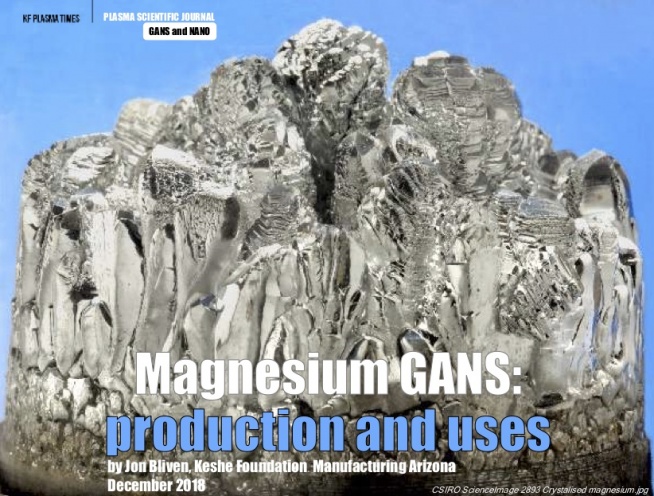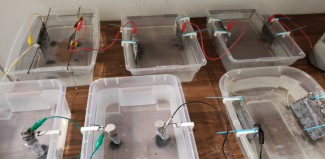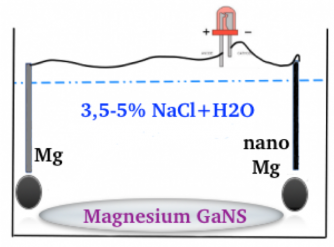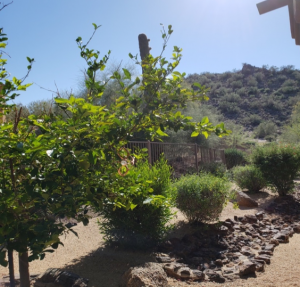Magnesium GANS: Production and Uses
(You can also find other opportunities and information at Magnesium (Mg) GANS)
This article is part of the KF Plasma Times January 2019
Keywords: GaNS production, Mg GaNS, nano coated Magnesium, healts, plants.
Published: January 2019.
Subject
This paper documents the production of the Magnesium GANS and identifies its potential uses.
Method
The proposed method of GANS production uses a standard GANS production kit, such as the one available from the USA store [1]. The production of this GANS is analogous to the CuO GANS production. In the production of CuO GANS, one uses a copper plate and a Nano-coated copper plate. The production of Magnesium GANS requires two magnesium plates, one of which is Nano-coated.
Materials
The complete list of materials required for the production of this GANS is as follows:
- Plastic box
- Two magnesium plates (anodes or magnesium ribbon), one of which is Nano-coated
- Two alligator clips (optional)
- Pure sea salt and distilled water
- Copper wire
- LED (optional)
- 1.5 V battery (optional)
Procedure
Step 1)
Nano-coat one of the magnesium plates. Alternatively, one can also use magnesium anodes 4 to 6” long or magnesium ribbon. Nano-coating magnesium is through the same caustic process as Nano-coating copper. For further info on Nano-coating refer to the KFWiki [2].
Step 2)
In a GANS production box, position the Nano-coated magnesium plate opposite the magnesium plate. As with every GANS production, when using the anodes or the plates, position them 1-2” above the bottom of the production box. If they sit on the bottom of the box it will slow down or prevent GANS from being produced.
Step 3)
Connect the two magnesium plates to each other via a wire. Small holes can be drilled into one corner of each plate, prior to the Nano-coating process, that can be used to connect the wire to the plates. You can avoid drilling holes in favor of using alligator clips to connect the LED to the plates, however, it is very important to ensure you do not scratch the Nano-coating of the copper plate when attaching the clip. The use of an LED light in the circuit helps to create the flow of energy between the plates. Connect the anode (longer piece of wire = positive pole) of the LED with the copper wire that leads to the magnesium plate/coil, and the cathode (notch or shorter needle on LED package = negative pole) with the copper wire that leads to the Nano-coated plate.
Step 4)
Fill up the production box (as in Fig. 1) with a 3.5-5% sea salt, distilled water solution (make sure the salt is not contaminated with any minerals). Place the box away from other boxes and reactors and leave alone for 7-14 days.
Step 5)
When one observes the deposit of the GANS at the bottom of the box, or the plates become too salty or worn out, it is time to harvest the GANS. Set the plates aside (remembering the polarity if you wish to use them again) and with a Nano-coated plastic spoon, collect the amino acid which floats on the water surface. Store it in a clean glass or plastic container.
Step 6)
Using a syringe, collect the white or cream colored GANS and the black GANS into separate jars. These color differences are different isotopes of the magnesium. One can see our color collection in this video [3].
Magnesium is a softer metal and if pieces of metal have fallen off during the process, then strain it through a cloth filter.
Caution: Do not use too thin a gauge plate as the metal is soft and can break from deterioration with the Nano-coating process.
Advice: If the GANS production is slow, try moving the two plates closer to each other; Also, it is best if a small amount of electricity is used (about 1.5 volts) from a battery or power supply. As with an LED, connect the negative polarity to the Nano-coated plate and positive to the pure magnesium plate.
Should the GANS be washed after collection?
NO – When GANS is not washed it holds its energy strength. If using the GANS in reactors or patches, this is the preferred method. In patches it is best to match the salinity of the body or about 1% for best results.
YES – When using it directly with agriculture it is best to have a low salinity of less than 1%. This requires at least one washing.
Usage
Magnesium is the 11th most abundant element (by mass) in the human body and is essential to all cells and some 300 enzymes. Magnesium ions interact with polyphosphate compounds such as ATP, DNA, and RNA [4]. Magnesium is vital for the proper functioning of hundreds of enzymes. Consuming adequate magnesium can have the following benefits:
- Reduce premenstrual symptoms,
- Prevent problems in the bones and improved bone health,It helps assimilate calcium into the bones and plays a role in activating vitamin D in the kidneys,
- Managing diabetes. It plays an important role in carbohydrate and glucose metabolism,
- Magnesium is necessary to maintain the health of the muscles, including the heart, and for the transmission of electrical signals in the body. It has been shown to lower the risk of fatty build-up on the walls of the arteries as well as lower the risk of hypertension or high blood pressure,
- Prevents or relieves migraine headaches,
- Relieving anxiety. (Ware, 2017) [5]
Most magnesium is absorbed in the small intestine, so this might be an area to allow the energy fields to best work.
Magnesium Patches for Health
Figure 2 shows GANS patches with purple colored ‘water beads’ to improve health in certain areas. I wore these for about 1 hour at a time to observe results.
Lemon Tree
For application in plants, a ball loaded with Zinc and Magnesium GANSes was placed in the 8-year-old lemon tree (Fig. 3) that has produced very little harvest to date. It has been in the tree for only a month or two and will need to continue to monitor.
Observations
In both cases the observations are incomplete, but it is my thoughts that with more time very observable benefits will start to show up. Magnesium is very important part of our health and the health of our plants. It is hoped that by sharing this, others might benefit from this information.
Acknowledgements
Much of this understanding is the result of my years with the Foundation and the teachings of Mr. Keshe.
References
- https://usastore.keshefoundation.org/store/product/gans-kit-home/
- https://en.kfwiki.org/wiki/Category:Nano-Coating_and_the_Production_of_GANS#Nano-Coating_Using_NaOH
- https://youtu.be/r2e4MtW29Cw
- https://en.wikipedia.org/wiki/Magnesium
- Ware, M. (2017, 12 20). Why do we need magnesium? Retrieved from Medical News Today: https://www.medicalnewstoday.com/articles/286839.php
Supplementary material
Magnesium GANS production setup and its different colors area captured in this video https://youtu.be/r2e4MtW29Cw




